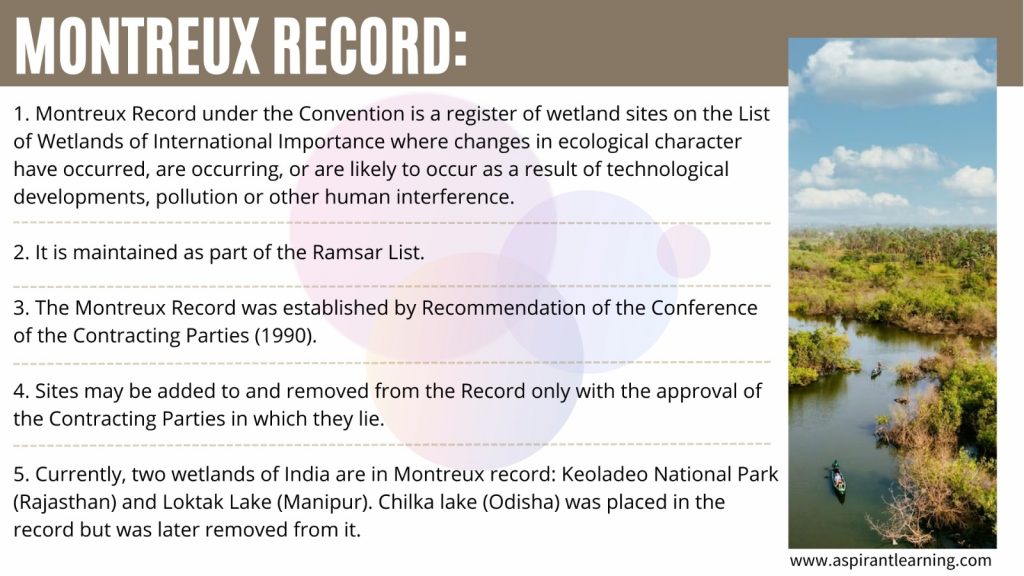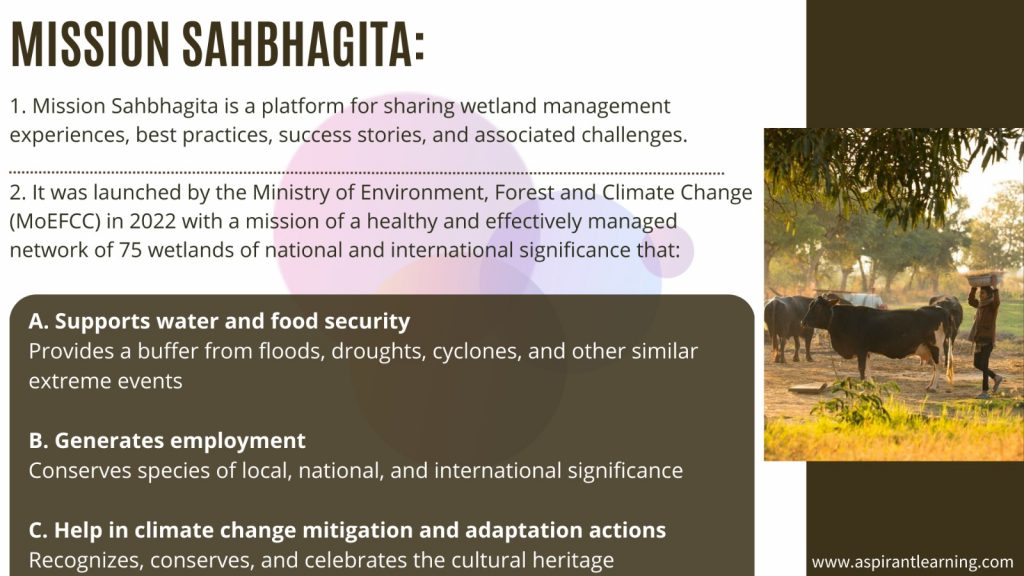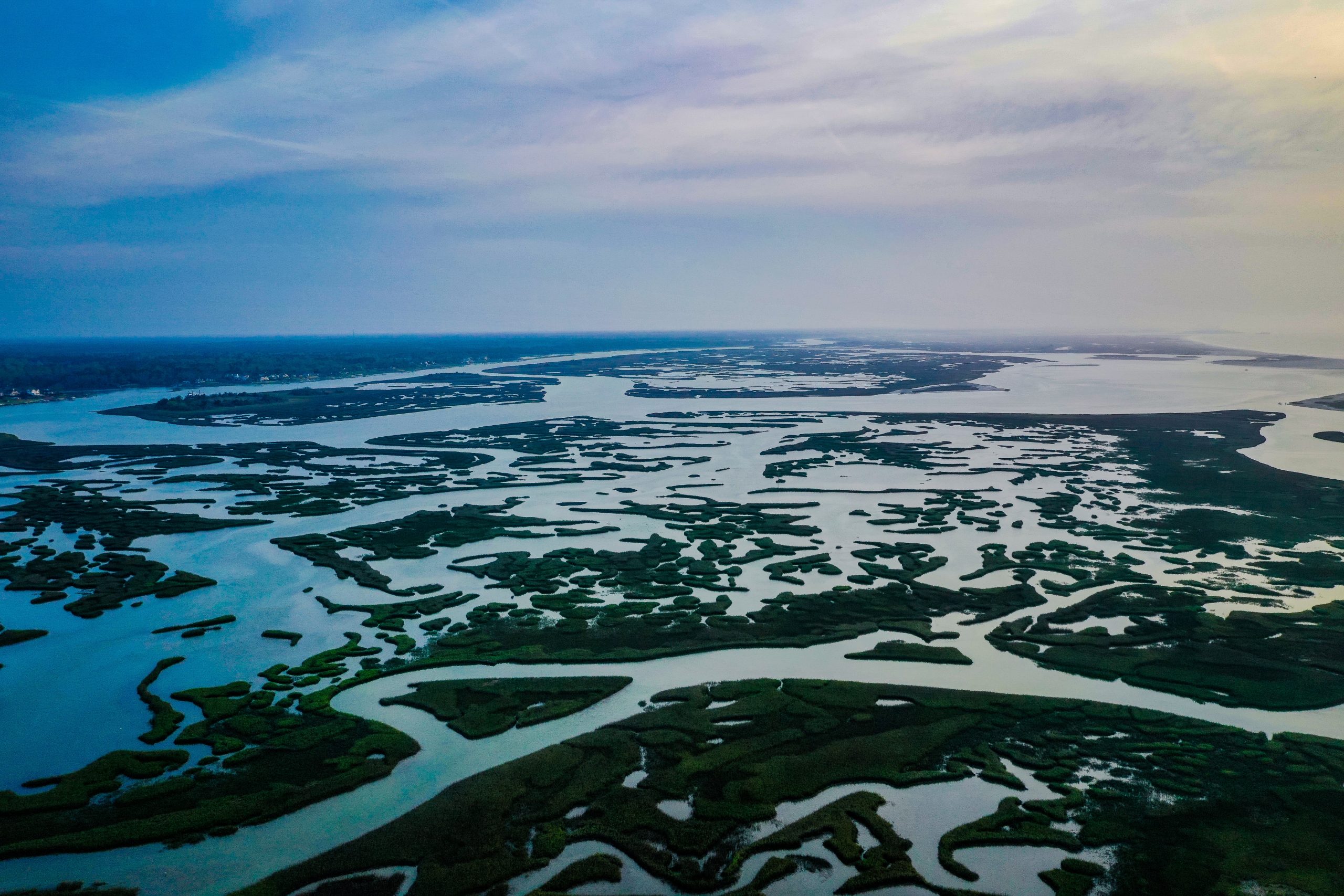News Highlights:
- The State Governments and Union Territory administrations celebrated World Wetlands Day (WWD) at all 75 Ramsar sites this year, with over 200 events.
- The National Flag was hoisted at the Ramsar Sites.
Key Takeaway:
- India has the largest network of Ramsar Sites in Asia
- Ramsar sites provide a critical ecological network for conserving global biological diversity and supporting human well-being.

World Wetlands Day:
- About:
- World Wetlands Day is observed on 2nd February yearly to commemorate the signing of the Ramsar Convention on Wetlands of International Importance in 1971.
- The Ramsar Convention is an intergovernmental treaty that provides the framework for national action and international cooperation for the conservation and wise use of wetlands and their resources.
- The countries with the most Ramsar Sites are the United Kingdom (175) and Mexico (142), as per the Ramsar List.
- Bolivia has the largest area, with 148,000 sq km, under the Convention protection.
- Theme:
- The 2023 theme for World Wetlands Day is ‘Wetland Restoration’, which highlights the urgent need to prioritise wetland restoration.
- It calls on an entire generation to take proactive action for wetlands by investing financial, human and political capital to save the wetlands from disappearing and to revive and restore those that have been degraded.
- India’s Ramsar sites:
- India has been a party to the Convention since 1982 and has so far declared 75 wetlands as Ramsar sites covering 23 states and Union Territories.
- India has the largest network of Ramsar Sites in Asia, making these sites a critical ecological network for conserving global biological diversity and supporting human well-being.
- The Ministry of Environment, Forest and Climate Change (MoEFCC) launched Mission Sahbhagita in 2022 with a mission of a healthy and effectively managed network of 75 wetlands of national and international significance.
Wetland:
- About:
- Wetlands are ecosystems saturated with water, either seasonally or permanently.
- They include mangroves, marshes, rivers, lakes, deltas, floodplains and flooded forests, rice fields, coral reefs, marine areas no deeper than 6 meters at low tide, and human-made wetlands such as waste-water treatment ponds and reservoirs.
- Significance:
- Wetlands are a critical part of our natural environment. Wetlands of national and international significance which support water and food security; buffer from floods, droughts, cyclones and other extreme events; employment generation; conservation of species of local, national and international significance; climate change mitigation and adaptation actions; and recognition, conservation and celebration of cultural heritage.
- 40% of the world’s species live or breed in wetlands.
- Wetlands are “nurseries of life” – 40% of animals breed in wetlands.
- Wetlands are the “kidneys of the earth” – they clean the environment of pollutants.
- Wetlands “matter for climate change” – they store 30% of land-based carbon.
- Wetlands “minimise disaster risks” – they absorb storm surges.
- Threats:
- As per the IPBES (Intergovernmental Science-Policy Platform on Biodiversity and Ecosystem Services)’s global assessment, wetlands are the most threatened ecosystem.
- Wetlands are disappearing 3 times faster than forests due to human activities and global warming.
- According to UNESCO, the threat to wetlands will harm 40% of the world’s flora and fauna that live or breed in wetlands.
- Major threats: Agriculture, development, pollution and climate change.

Way Forward:
- Mainstreaming wetlands ecosystem services and biodiversity into India’s developmental policies and urban planning processes, including climate change mitigation, is the pressing need of the hour.
- There is also a need for more scientific data, imagery, maps and other relevant tools to provide knowledge on the status of wetlands.
Pic Courtesy: Freepik
Content Source: PIB



